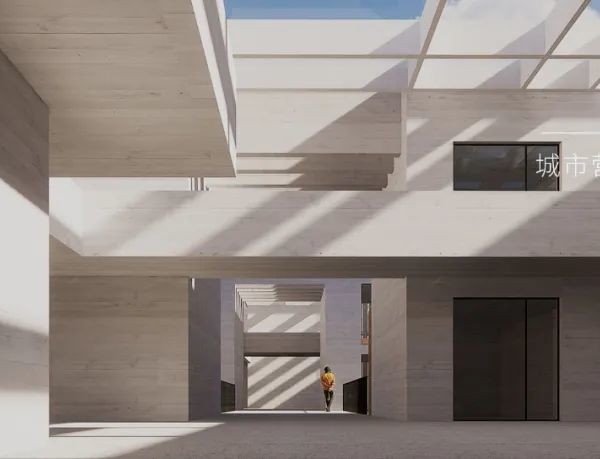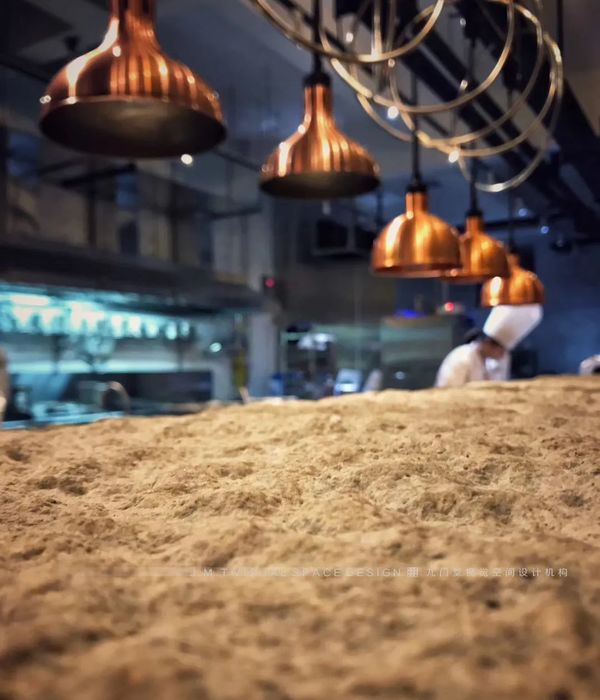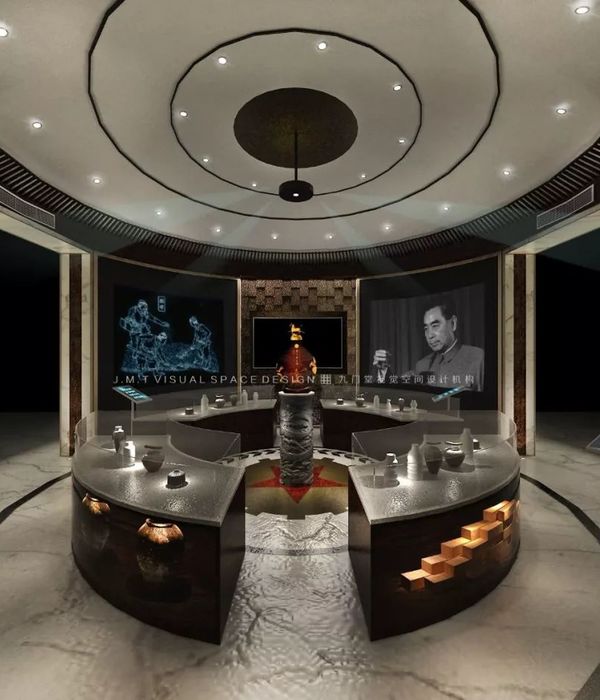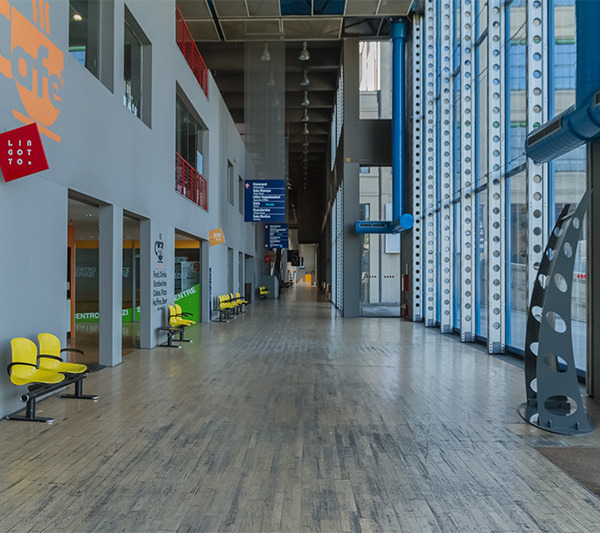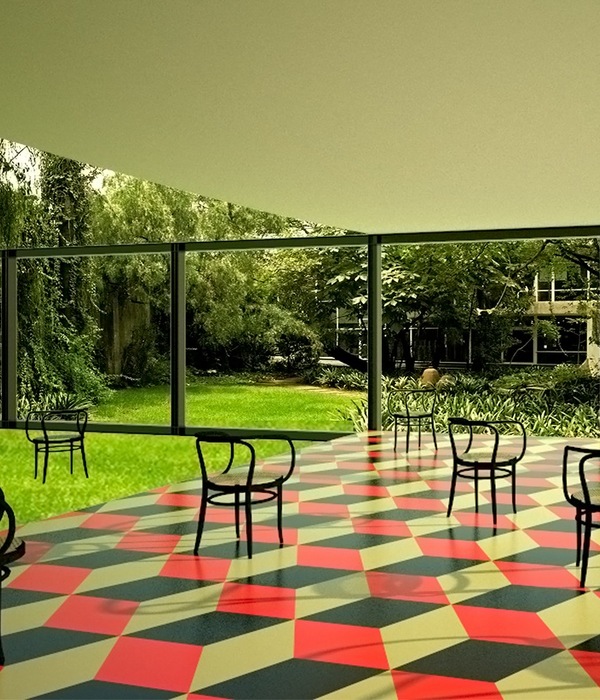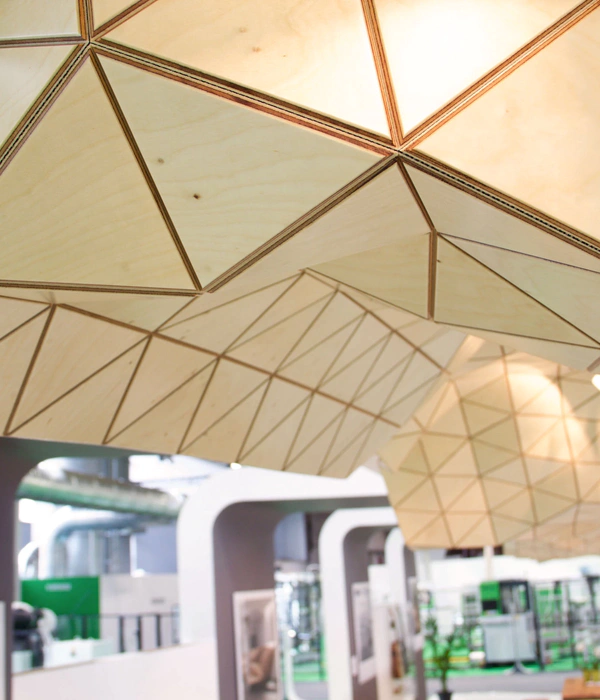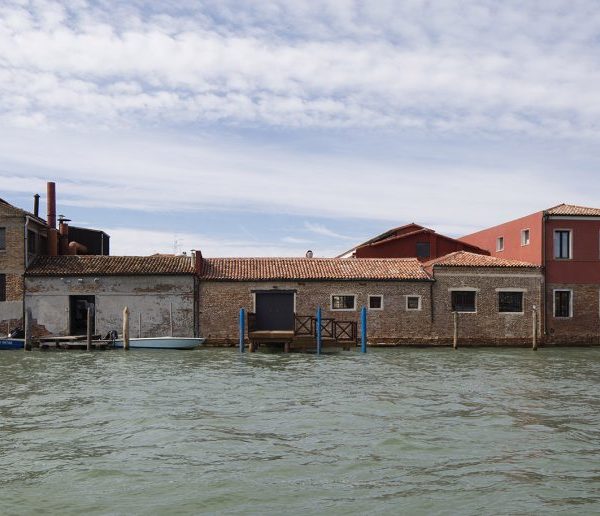虽然阿联酋建国仅有几十年,但当地却有着悠久的手工艺历史。在阿布扎比现代化的摩天大楼森林中,Kossmanndejong事务所与Tellart一起举办了一场关于古代工艺品与传统手工艺的展览。工匠之家保护着这些珍贵的传统技艺,在这里,人们将探索古老手工艺的秘密,成为代代相传的传统工艺发展中的一环。
In a country that is only a few decades old, among the skyscrapers in Abu Dhabi, we created an exhibition together with Tellart about ancient crafts and artisanry. The House of Artisans protects these traditions. Here you can discover the most important techniques, and you yourself become part of the chain of generations that pass on these crafts.
▼项目概览,overall of the project ©Mohamed Somji / Seeing Things
工匠之家坐落于阿布扎比的文化中心,紧邻阿布扎比最古老、最著名的建筑豪森宫殿(Qasr al Hosn)。该博物馆致力于保护与展示阿联酋广泛流传的非物质文化遗产,可谓是是对传统和现代当地工艺的致敬。这一点,由建筑师Alex Franklin设计的柳条编织外立面就已清晰地表达出来。该建筑的设计后又由格拉斯哥事务所Austin-Smith:Lord接手。为了此次展览,Kossmanndejong事务所对室内空间进行了重新规划,当人们在其中漫步时就如同穿梭在一个充满故事的、由棕榈叶编织而成的小村庄中。三种传统的编织技术构成了展览的基础,包括:棕榈叶编织、羊毛编织,以及花纹编织,它们以一种积极有趣的方式,向人们展示出这些传统技术的操作流程与发展史。
The House of Artisans is located right in the cultural heart of Abu Dhabi, next to the Qasr al Hosn, the oldest and most famous building in Abu Dhabi. This museum is dedicated to the extensive intangible heritage of the United Emirates. The House of Artisans is a tribute to traditional and modern local crafts. This can be seen in the striking building by architect Alex Franklin (then Austin-Smith:Lord) with a facade of woven wicker panels. We completely renewed the exhibition and inside you can now wander through a woven village full of stories. Three traditional weaving techniques form the basis of the exhibition. In a playful and active way, you will be introduced to these techniques: weaving with palm leaves, weaving wool, and creating patterns.
▼博物馆外观,exterior of the museum ©Mohamed Somji / Seeing Things
从沙漠到绿洲、从海岸到大洋,工匠们发展了技能,使用当地的天然材料建造房屋,制作渔筐,编织衣物,他们用稀缺的资源创造出生活所需要的一切。这些代代相传的技艺与工艺品将人与人、人与自然环境联系起来。本次展览便向大众展示出工匠们令人惊叹的韧性和智谋,以及人类与自然的平衡关系,让参观者了解到工匠们是如何受到周围美景的启发,并创造出这些兼顾美学与实用性的工艺制品的。
From the desert and the oases to the coast and the sea – artisans developed skills to create what they needed with scarce resources. They used local natural materials to build houses, make fishing baskets and weave clothing. These crafts thus connected people to their natural environment, and to each other. Because the skills are passed on from generation to generation. The exhibition shows the incredible resilience and resourcefulness of the artisans and their balanced relationship with nature. It shows how they are inspired by the beauty of their surroundings to create not only practical but also beautiful creations.
▼展区中央棕榈叶编织的展亭,woven pavilions of palm leaves in the center of the exhibition area ©Mohamed Somji / Seeing Things
展览坐落于一个由两扇长曲面墙包围起来的开放空间中。在其中一面墙上,人们可以看到大量的工匠手部细节投影,在慢镜头播放中,人们将清晰地观赏到各种独特的工艺手法,这种设置可谓是对所有工艺的基础、同时也是最伟大的工具 —— 手的致敬。另一面墙被称为“工艺品的世界”,墙面上挂满了各式各样的材料与工艺制品,展现出阿联酋当地传统手工艺品的丰富种类。场地的中央设有五个小展亭,这些建筑小品是根据传统的建筑工艺“Arish”,采用棕榈叶编织而成的。
The exhibition is in an open space bounded by two long, curved walls. On one wall, large projected details of hands can be seen in slow motion, engaged in all sorts of inimitable movements, and thus paying tribute to the great tool that is the basis of all crafts: the hand. The other wall – “the universe of crafts” – is completely covered with objects and materials, celebrating all crafts in the UAE. In the middle are five pavilions – they are woven from palm leaves according to ‘Arish’ – a traditional construction technique.
▼曲面墙上的工匠手部细节投影,large projected details of hands can be seen on the long, curved wall ©Mohamed Somji / Seeing Things
▼投影墙与DIY区,the projection wall and DIY area ©Mohamed Somji / Seeing Things
▼“工艺品的世界”墙,The other wall – “the universe of crafts” ©Mohamed Somji / Seeing Things
在中央展亭中,人们将邂逅三位阿联酋手工艺者,她们将在这里现场展示工艺品的制作过程,参观者可以近距离地观察到她们是如何用手思考,那些精心挑选的花纹又是如何在她们的手中得以实现的。中央工作坊的周围围绕着三个小展亭,盛情邀请着游客们进一步了解Sadu、Khoos与Talli编织工艺,此外,在这里,人们还可以享受传统的咖啡仪式,亲身体验阿联酋人的热情好客。
▼中央展亭与三位手工艺者,three Emirati artisans in the central pavilion ©Mohamed Somji / Seeing Things
▼手工艺者现场授课场景,The scene of the craftsmen teaching on site ©Mohamed Somji / Seeing Things
▼其他展亭,other pavilions ©Mohamed Somji / Seeing Things
▼展亭中的互动多媒体设备,Interactive media equipment in the pavilion ©Mohamed Somji / Seeing Things
In the central pavilion, you are the guest of three Emirati artisans who practice their craft on site. Here you can see up close how they think with their hands and demonstrate their craftsmanship with their carefully chosen patterns. Around this workshop, you will find three pavilions that invite you to learn about Sadu, Khoos, and Talli, the traditional Emirati weaving techniques. Further on, you can enjoy a traditional coffee ritual and experience the hospitality of the Emirati first hand.
▼当地传统咖啡仪式,traditional coffee ritual ©Mohamed Somji / Seeing Things
在世界各地,手工艺正处于消失的边缘。而在这个年轻的国家,这些传统的工艺正被新一代的艺术家和设计师们所复兴。这些艺术家和设计师往往在国外受过教育,他们正在寻找一种新的、独特的视觉语言来融合他们的传统。此次展览不仅是对传统的致敬,同时也是对未来的展望。在这五个编织结构的展亭中,游客将沉浸于传统手工艺的世界,而在展亭外,人们将邂逅新一代的艺术家和设计师,并与他们一起探索交流。
Around the world, crafts are on the verge of disappearing. In this young nation, they are being revived by a new generation of artists and designers – oftentimes educated abroad. It is this generation in particular that is looking for a new, individual visual language that incorporates their heritage. The new exhibition celebrates tradition, but also looks to the future. Inside the five pavilions of woven structures, visitors will discover traditional crafts. On the outside, they will encounter a new generation of artists and designers.
▼多媒体放映厅,cinema ©Mohamed Somji / Seeing Things
▼纪念品商店,gift shop ©Mohamed Somji / Seeing Things
Photography: Mohamed Somji / Seeing Things
{{item.text_origin}}


